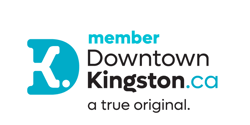Role of Committees
While the Board of Management has the overall responsibility for the operation of the BIA, it is the committees that develop and implement the programs that will make the BIA successful.
Committees are established to relieve the Board of Management of some of the burden of organizing projects – in effect to share the workload – and to involve a greater number of people in the activities of the BIA.
A BIA may appoint as many committees as it wishes. The number of committees established depends upon the short and long-term goals of the organization. Some committees are established on a year-round basis (standing committees) and others are created to perform certain specific tasks (ad hoc committees).
Committees report directly to the Board. When there is a committee meeting, a written report is to be submitted one week prior to the next board meeting and included in the Board package.
Requested research, concept pitches, or recommendations that require Board approval can be booked through hello@downtownkingston.ca to ensure the appropriate time is booked on the agenda.
Who should be represented on BIA Committees?
When considering prospective members for your committees, you are not limited to BIA members. You can draw on expertise from outside the BIA, involving anyone who will help your committee attain its goals. For example, on your Promotions Committee, you may wish to involve a marketing expert from a local college or high school. Get the expertise you need.
The Chair of each committee should be a member of the Board of Management in order to ensure first-hand reporting. In addition, it is recommended that the remainder of seats on the board be made up of the following:
- BIA members from a variety of sectors
- Business representatives (Professional, Service, and Retail)
- The general public
BIA members from a variety of sectors
BIA members must be represented on your BIA committees. They have the greatest vested interest in its success and are directly affected by any BIA program. They will also be the principal source of funding for the BIA’s projects, and they should have a prominent part in determining how the BIA funds will be spent.
It is important to actively seek out BIA member representation from a variety of business sectors so that the Board can better represent the membership as a whole.
Business representatives (Professional, Service, and Retail)
Bankers, lawyers, accountants, and other service businesses all have a vested interest in ensuring that the business improvement area is a pleasant environment for their clients.
In order to gain the support of the entire business community, you may wish to include members from partner and support organizations (ie. Tourism Kingston, Kingston Economic Development, Kingston Accommodation Partners, City of Kingston) on your committees in order to establish a formal liaison and nurture a healthy relationship between the organizations.
General Public
The final group that should be considered when structuring a committee is the consuming public. The perspective of the user is important both for determining what improvements could be made to the BIA and how they can be accomplished. Any viable long-term solution to the area’s problems will invariably affect the entire community. Board-approved representatives from the community should be included on appropriate committees.
Size of Committees
The committee must be of a workable size to obtain adequate community representation and to ensure the formation of a strong group that can get things done. However, groups that are too large can be difficult to manage. Experience has shown it is best to remain small – between 6 and 10 people. Any more than 10 people and the committee may become unwieldy.
One method of maintaining a workable size while maximizing participation is to include non-voting “ex officio” members. These are members who, by virtue of their position or expertise, are invited to participate as resource persons to the committee. However, they have no vote and are not involved in all discussions or procedural functions. The planner, a Chamber of Commerce representative, engineer or economic development officer, for example, could be a non-voting member.
A second method of maintaining a workable committee size is to invite selected participants or interested individuals only to those specific meetings where a special problem is discussed, or a particular viewpoint is desirable. Consultants, for example, can be invited to attend only those meetings where their specialized input is required.




